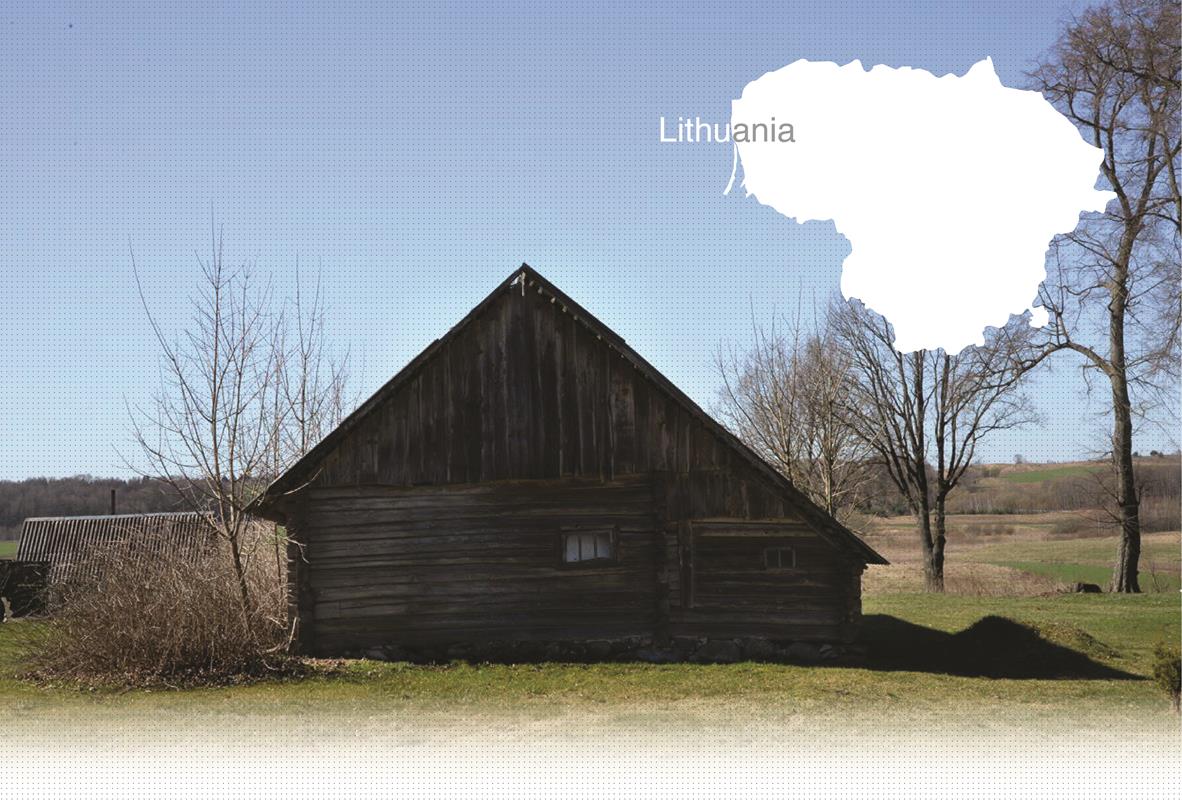

1 Killing site(s)
Kazys B., born in 1928:
"Y.U.: When the Germans arrived, did the persecution of Jews start immediately?
Witness: Yes. There were plenty of weapons, ammunition, and artillery left after the battle. The Jews were brought in to collect the weaponry and load it onto trucks, then to unload it elsewhere. In short, they were forced to work. The Germans didn’t speak Lithuanian, but some Jews knew German, so they acted as interpreters. The Jews were tortured. They were forced to tie themselves to light anti-aircraft guns and pull them 20 kilometers to Marijampolė. They were beaten as well. Posters were put up on street poles accusing Jews of harming and exploiting the villagers. The aim was to turn people against the Jews. But the truth is, people loved and respected the Jews.
Y.U.: Where were those posters put up?
Witness: On the walls of houses and on street poles.
Y.U.: Even here in Ąžuolų Būda?
Witness: Yes.
Y.U.: What was written or drawn on those posters?
Witness: There were only inscriptions against the Jews. They claimed that Jews were exploiting us and harming our families. I don’t recall anything positive written on them.
Y.U.: Were only Jewish men forced to work, or women too?
Witness: Jewish men were the ones doing the work.
Y.U.: Didn’t the women work?
Witness: No, I didn’t see them working.
Y.U.: Were they forced to wear distinctive signs?
Witness: Yes, they had large yellow six-pointed stars attached to their chests and backs.
Y.U.: Were the Jews guarded while they worked?
Witness: Yes, they were guarded by armed German soldiers. The Jews were forced to do various types of labor, including digging a trench for laying a cable. The German guards beat them if they didn’t obey. It was cruel. Eighty years have passed, but I still can’t forget it." (Testimony N°YIU338LT, interviewed in Ąžuolų Būda, on November 6, 2016)
Ąžuolų Būda is located approximately 20 km (12.4 mi) northeast of Marijampolė, the regional center. Between 1795 and 1815, the village was under Prussian rule before being incorporated into the Russian Empire. Although little is known about the first settlement of Jews in the village, the establishment of a Zionist association in 1899 indicates a Jewish presence in Ąžuolų Būda at that time.
Before World War I, about 15 Jewish families lived in the village. During the interwar period, when Ąžuolų Būda became part of independent Lithuania, most of its Jewish residents returned to the village. The local Jewish community was primarily involved in commerce and peddling, and some provided services to visitors during the summer at a nearby forest resort. The village hosted a synagogue, and six shops were owned by Jews. A local Jewish woman was known for treating residents with herbal remedies.
Jewish children attended the Heder, and some pursued further studies in nearby Marijampolė or Kaunas. However, when Lithuania was annexed by the Soviet Union in 1940, a number of Ąžuolų Būda residents, including Jews, were deported to Siberia.
On the eve of the German invasion, which began on June 22, 1941, approximately six Jewish families lived in Ąžuolų Būda. While some managed to evacuate to the east, most remained in the village.
Ąžuolų Būda was occupied by German troops on June 28, 1941. Shortly afterward, a new administration and a local police unit were established in the village. While the German headquarters were set up in the nearby town of Kazlų Rūda, a German supervisor was permanently stationed in Ąžuolų Būda. According to a local resident interviewed by Yahad - In Unum, in July 1941, all the Jews of Ąžuolų Būda were loaded onto a truck and taken elsewhere, presumably to Marijampolė, where they were murdered alongside other Jews from the surrounding area. Their possessions, including homes and land, were distributed among local Lithuanians.
After the deportation of the local Jewish community, groups of Jewish men were regularly brought to Ąžuolų Būda during the summer of 1941 to perform forced labor. They were tasked with digging trenches, collecting weapons and ammunition left behind after early battles in the war, and transporting them to Marijampolė. These Jewish laborers, marked by yellow six-pointed stars on their clothing, were subjected to beatings by the German guards who oversaw their work. According to a local witness, once the labor was completed, these Jewish workers were presumably taken to Marijampolė, where they were executed.
According to Soviet archives, on July 23, 1941, 100 Jewish men from Gudeliai were murdered in the forest near Ąžuolų Būda. The first group of victims was transported to the killing site by truck and forced to approach a pit dug in advance, where they were shot by German executioners. The site was cordoned off by Lithuanian auxiliaries to prevent locals from witnessing the massacre. After the first group was executed and buried in the pit, a second group was brought by another truck and killed in a similar manner in a second pit. The victims were buried in two of the three or four pits dug at the site.
Today, the contours of the pits are still visible due to subsidence. A monument in the form of a cross has been erected a few dozen meters from the killing site to commemorate Lithuanian victims, suggesting that Lithuanians were also killed in the same forest.
For more information about the killing of Jews in Marijampolė, please follow the corresponding profile.
Do you have additional information regarding a village that you would like to share with Yahad ?
Please contact us at contact@yahadinunum.org
or by calling Yahad – In Unum at +33 (0) 1 53 20 13 17